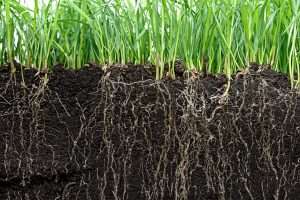ceat-speciality:blogs-tags/all,ceat-speciality:blogs-tags/technology
The Ultimate Guide to Agricultural Trends
Tue, 20 Jun 2023 | PRODUCTS
Agriculture is a constantly evolving industry, with new practices and technologies emerging each year. It can be difficult to keep up with all of the changes and to determine which trends are worth investing in.
That’s why CEAT Specialty, a manufacturer of high technology Ag tires, is sharing details on the latest in agricultural trends. In this post, we’ll explore five trends that are shaping the future of farming and provide insights into how they can benefit your operation.
Precision Agriculture — involves using advanced technologies like GPS, sensors, robotics and analytics to optimize productivity. By collecting data on soil quality, plant health, and weather patterns, farmers can make informed decisions about when and where to plant, fertilize, and irrigate their crops. If you’re looking to invest in precision agriculture, start with tools like soil moisture sensors and weather stations.
Vertical Farming — a growing trend in certain types of agriculture that involves growing crops in an indoor, vertical environment. Using LED lights and hydroponic systems, vertical farms can produce higher yields and more consistent crops than traditional farming methods. Vertical farms are also more environmentally friendly than traditional farming methods, as they use less water and pesticides. If you’re looking to start a vertical farm, consider investing in LED grow lights and automated hydroponic systems.
Farm-to-Table — a trend that inolves selling locally produced food directly to consumers. By cutting out the middleman, farmers can increase profits and build relationships with consumers. Farm-to-table also benefits the environment, as it reduces the carbon footprint associated with transporting food long distances. If you’re interested in a farm-to-table operation, consider selling at farmers’ markets or setting up a community-supported agriculture (CSA) program.
Drones — These flying machines are becoming increasingly popular in agriculture, as they can be used to collect data on crops and map farmland more efficiently than traditional methods. By using drones to monitor crop health and growth, farmers can make better decisions about irrigation and fertilizer application. Drones can also be used to map farmland and identify areas that need more attention. If you’re interested in exploring drone technology, start with a basic drone equipped with a camera.
Sustainable Agriculture — involves using environmentally friendly practices like crop rotation,intercropping, and cover crops to maintain soil quality and reduce waste. Sustainable agriculture can help reduce environmental impact and increase productivity by maintaining healthy soils and reducing the need for fertilizers and pesticides. If you’re interested in sustainable agriculture, consider implementing practices like cover cropping and intercropping on your farm.
Agriculture is an ever-changing industry, but by staying on top of trends and investing in new technologies, farmers and ranchers can increase productivity and profitability while reducing environmental impact. There are many opportunities to innovate and improve your operation. By keeping an open mind and being willing to try new things, you can help shape the future of agriculture and build a successful and sustainable farming business.























